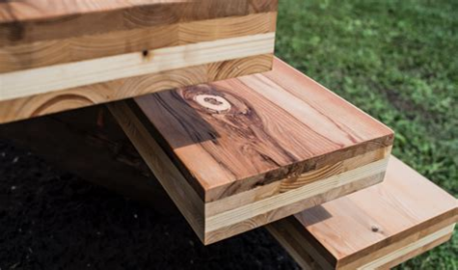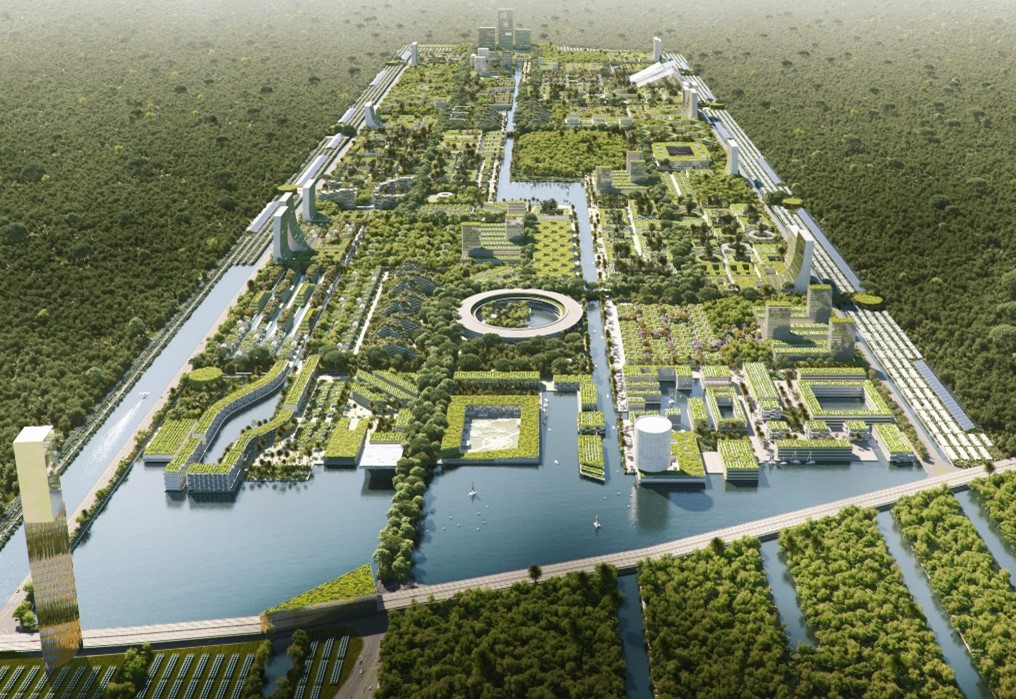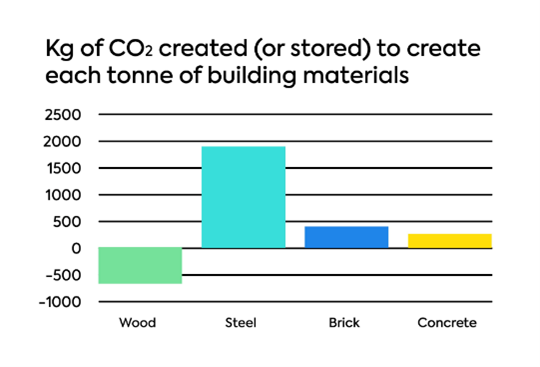★ Team 3A: CCCs – The cities that grow on trees!
The problem…
The existence of greenhouse gases in our atmosphere is a growing problem, and a problem that becomes ever more pronounced as our populations grow.
An ever-increasing population demands larger cities. At first glance, this may not seem like much of a problem, but many construction materials produce large amounts of CO2. Concrete, for example, is the second most commonly used material (after water) and is responsible for up to 8% of CO2 release globally.
However, this doesn’t have to be the case! This graph shows that there are materials that in fact store carbon. This inspired our solution – carbon capturing cities (CCCs)!
The solution… CCCs!
What is a CCC?
CCCs act in symbiosis with their surroundings, and act as passive, long-term carbon sinks. The aim is that the carbon stored within these buildings will be stored for many decades, and will be recycled at the end of the building’s lifetime. These cities can be built from scratch, and in time, hopefully existing cities could be retrofitted, offsetting their CO2 emissions and improving quality of life globally.
But is it a good idea to build with wood and other biomass?
The technology already exists! For many years, buildings have been constructed from wood, or other local products. The largest wooden building currently stands at 53m tall in Vancouver.
Fast growing trees (such as spruce, pine or other biomass like bamboo) are preferred, but this raw timber can be soft and potentially difficult to build with. Cross-laminating the timber improves its structural properties, and allows the material to be used more reliably.
Other biomass products, such as hemp, can be used for insulation, construction blocks and more. Safety comes first! Engineered wood technology and fire-resistant measures (such as glass panels within the wood in key areas of the house) will be used to ensure the building follows building regulations for fire and safety.

Figure 2: Cross laminated timber has improved structural properties compared to raw timber.
A key part of the solution is the provision for what to do at the end of the building’s life, including repurposing and recycling, so that the carbon continues to be stored.
Okay great! But are CCCs economically feasible?
Absolutely! We have developed a greenhouse gas performance framework, focused on CO2 removal. Our CCCs will not just mitigate through using wood over concrete or steel, but also encompass regional land management so natural areas offset emissions. Prioritising wood for construction over fuelwood is important if we are to move towards carbon storage rather than emission.
We will achieve this using financing based on a carbon credit system imposed on current carbon intensive industry. The impact of our sustainable investments will be quantified by greenhouse gas sequestration of building projects. These impacts will be fully disclosed to the public in campaigns to generate enthusiasm for carbon capture in the built environment.
To achieve these planning objectives, we need global cooperation. A robust policy framework for greater environmental and social good is needed!
Sounds good! But where will the materials come from?
Different cities in different biomes will use different materials as their primary building tool, but in each case, the material will be grown in the surrounding area in a sustainable way. The city itself only works because of the surrounding area. However, it is not just timber forests for continued building. It is designed so that the forest is frequently replenished, and grows continually. This will support native wildlife and biodiversity, whilst also capturing carbon. Around the city, land will be managed so agriculture providing inhabitants with food is seamlessly incorporated into successional stages of forest growth. Monoculture is avoided. Plants for food, building materials and soil restoration are planted in spatially- and temporally-planned sequences.

Figure 3: https://www.ubm-development.com/magazin/en/the-greenest-city-in-the-world/
The bioregion in the surrounding area is much larger the city itself, but is seen as integral to the city’s function. Residents have easy access to nature, and hiking trails through the forest. The city centre (where businesses and housing are concentrated) is the hub at the centre of the ecosystem, connected by its supply chain to its biodiverse surroundings.
Sounds like it might take a while to grow the trees…
Yes, unfortunately trees don’t just appear overnight. However, this is a long-term solution to a global issue. It may take a while to get the materials in the first place, but once the forests are established, the regular replanting and upkeep will provide a steady flow of new materials for expansion when needed.
In the meantime, sample show homes will be created! These will be used to improve public perception around wooden buildings, and pique the interest of investors looking for that next big worthwhile investment!
Fantastic! When can I move in?

